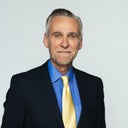Answers (12)
From board-certified doctors and trusted medical professionals
Dr. Lewis Albert Andres, MD

Dr. Lewis Albert Andres, MD
Board Certified Plastic Surgeon
Answer
Dr. Richard Baxter, MD

Dr. Richard Baxter, MD
Board Certified Plastic Surgeon
Answer
Dr. Jaron McMullin, MD
Dr. Jaron McMullin, MD
Board Certified Plastic Surgeon
Answer
Dr. C. Andrew Salzberg, MD
Dr. C. Andrew Salzberg, MD
Board Certified Plastic Surgeon
Answer
Dr. Robert Whitfield, MD
Dr. Robert Whitfield, MD
Board Certified Plastic Surgeon
Answer
Dr. C. Bob Basu, MD, MPH, FACS
Dr. C. Bob Basu, MD, MPH, FACS
Board Certified Plastic Surgeon
Answer
Dr. Erez Sternberg, MD
Dr. Erez Sternberg, MD
Board Certified Plastic Surgeon
Answer
More AlloDerm Questions
See all AlloDerm Q&AWE SEND PRETTY
EMAILS
What’s trending? Who’s turning heads? Which TikTok myths need busting? We’ve got you. No fluff, no gatekeeping—just real talk. Get our free, unfiltered newsletter.
